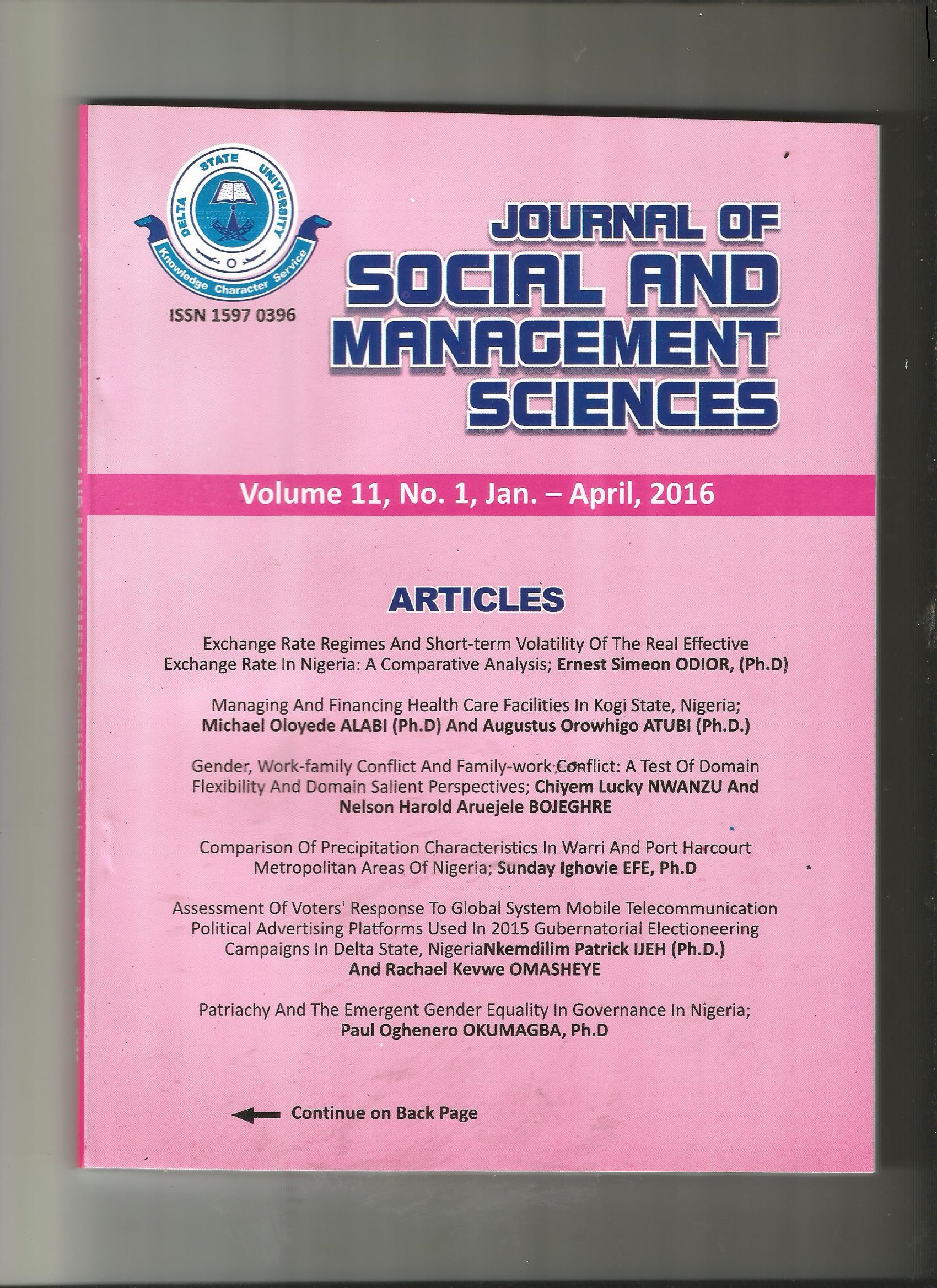
JOURNAL OF SOCIAL AND MANAGEMENT SCIENCES
Journal of the Faculty of Social Sciences, Delta State University, Abraka, Nigeria
ISSN: 1597-0396
DOI: 10.5987/UJ-JSMS
Email: jsms@universityjournals.org
TOXIC ASSETS DILEMMA AND THE HEALTH OF DEPOSIT MONEY BANKS: ASSESSING THE PERFORMANCE OF THE ASSET MANAGEMENT COMPANY OF NIGERIA
DOI: 10.5987/UJ-JSMS.17.065.1 | Article Number: 2C30687C12 | Vol.12 (1) - April 2017
Authors: EBIAGHAN Orits F. , OJUGBELI Onyemulu C. and EMMA Okoye
Keywords: Toxic Assets, Capital Adequacy Ratio, Liquidity Ratio, Deposit Money Banks
This study is aimed at assessing the performance of the Assets Management Company of Nigeria (AMCOM) which was set up as a multipurpose resolution vehicle to buy up toxic assets of troubled banks by infusing fresh funds, thus mitigating the effects of the post-consolidation banking crises. Adopting the longitudinal survey research design, composite data covering all deposit money banks in Nigeria, were sourced from the Nigeria Deposit Insurance Corporation annual reports and accounts from 1993 to 2015, covering the period before and after the establishment of AMCON, using toxic assets as a proxy for the performance of AMCON, data were analyzed by running a multiple regression, using the Ordinary Least square (OLS) technique to test the formulated hypothesis, the results indicates that Shareholders Fund and Average Liquidity Ratio were statistically significant, while capital adequacy ratio was not statistically significant in relation to the performance of AMCON. Conclusively, though AMCON is discharging its responsibility effectively, there is need for caution, especially on the part of the Apex regulator in stemming the budding re-emergence of a gradual build-up of toxic assets in the industry.
Agbada, A. O. & Osuji, C. C (2013). The Efficacy of L i q u i d i t y M a n a g e m e n t a n d B a n k i n g P e r f o r m a n c e i n N i g e r i a . International Review of Management and Business Research, 2(1), pp.223 – 233.
Al-Sabbagh, N.M. (2004). Determinants of Capital Adequacy Ratio in Jordanian Banks. M.Sc. thesis, YarmoukUniversity, Jordan.
Calem PS, Rob R (1996). “The Impact of Capital- Based Regulation on Bank Risk-Taking: A Dynamic Model, Board of Governors of the Federal Reserve System,” Finance and Economics Discussion Series 96/12 (February), 36.
Lamido, S. (2010) “The Nigerian Banking Industry; What went wrong and the Way Forward” A lecture delivered at the convocation ceremony of Bayero university, Kano State Nigeria, February 26th.
Ibrahim, K. (2009) “Banking Crises and the Limits of Sanusi's Capitalist Reforms” Journal of Development Economics vol. 5, no 2 pp22-27
Sampson, E. (2008) “Global Financial Crises; Recession, Depression and Other Threats” Zenith Economic Quarterly vol. 3 no 4 October, pp 68-69
Ebiaghan, O. F. (2009) “The Impact of the Financial Meltdown on Capital Market: A Global Outlook”, International Journal of Management Science, vol. 1, No. 2, Pp 53-59
Mukhtar, A. (2010) “Liquidity Support to Banks: Theory and Contemporary Practice” Zenith Economic Quarterly vol. 5 no 3 July pp 30-31
Basel Committee on banking supervision (BCBS) (2003) “Supervisory Guidance on Dealing with Weak Banks” special report March pp 2-3
Eni, H. (2011) “Hurdles before AMCON” Broad Street Journal Edition 8 in TELL magazine no 8 February 28. Pp 30-35.
Obi, C. (2011) “AMCON is creating a win –win situation” Broad street journal editions No. 8 in TELL magazine no 8 February 28 pp 32-33.
Ogunleye, G.A (2010) Perspectives on The Nigerian Financial Safety –Net Nigeria Deposit insurance Corporation. Lagos-
Salako, T. (2010) “AMCON; Prospects, Challenges before CBN Banks,” Financial Standard vol. 10 no 513 July 5th pp 19-20
Salako, T. (2010) “Recapitalization; Nigerian Banks' Search for the Golden Fleece” Financial Standard vol. 10 no 512 June 28 pp 19-20
FGN 2010 AMCON act www.Centbank.org www.amcon.org www.wikipedia.com
